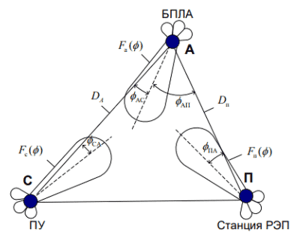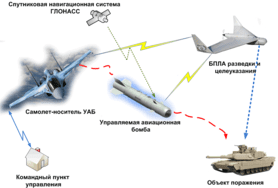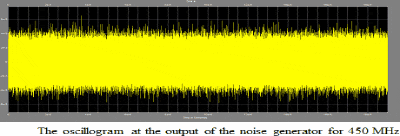Abstract
Content
- Introduction
- 1. Relevance of the Topic
- 2. Purpose and Objectives of the Research
- 3. An overview of existing methods of suppressing communications
- 4. The concept and principle of operation of single-use interference transmitters
- 5. Development and testing of an experimental installation of a platoon point using an interference transmitter
- Conclusions
- List of Sources
Introduction
The modern battlefield is increasingly characterized by the integration of sophisticated communication technologies into military operations. Platoon control centers serve as vital nodes to coordinate and execute tactical maneuvers, relying heavily on secure and reliable communication systems to transmit critical information. information such as troop movements, the latest intelligence and operational directives. However, the spread of advanced electronic warfare among potential adversaries pose a significant threat to the integrity and effectiveness of these communication networks.
Traditional methods of disrupting enemy communications have focused on jamming techniques and electronic warfare measures, which are often detectable and They can provoke countermeasures from the target forces. In contrast, the concept of single-use interference transmitters represents a new approach to ensuring disruption due to greater secrecy and a potentially reduced risk of detection. By placing these transmitters in close proximity to platoon control centers, Opponents can create targeted and temporary interference with communication systems, thereby impeding the ability of military units to receive and transmit critical information.
Understanding the fundamental principles of interference transmitters, including their use of the frequency spectrum, modulation methods and transmission power characteristics, It is important for a comprehensive assessment of their potential impact on the communications of the platoon control center. Moreover, an in-depth analysis of vulnerabilities in systems The communication of these control centers is crucial to identify specific weaknesses that can be exploited by single-use interference transmitters.
Delving into the possibilities and limitations of single-use interference transmitters in case of a breakdown in communication with the platoon control center, this study aims to provide valuable information to military planners and decision makers. It is expected that the results obtained will serve as a basis for the development of more reliable and sustainable communication architectures, as well as to develop effective countermeasures to mitigate the threat posed by hostile intervention tactics.
Through a systematic study of the theoretical foundations, practical implications, and experimental evaluations of single-use interference transmitters, this study It is aimed at contributing to the improvement of operational security and the success of the tasks of the armed forces operating in increasingly conflict and environments overloaded with electronics.
1. Relevance of the Topic
First of all, it should be noted that the relevance of the topic is obvious from the situation in our region, which cannot be called "ordinary", this study is necessary to help and the supply of our fighters on the front line. Until recently, we were lagging behind the enemy in this direction, but now the scales have changed to a more equal one, as well it is not necessary to write off the enemy and additionally pay attention to this. I felt this problem myself in my place, and it also helped me improve everything possible in this study.
It should also be noted that single-use interference transmitters and their impact on platoon control center communications are highlighted by the growing volume of literature in which The evolving nature of electronic warfare and its implications for modern military operations are considered.In David L. Adami's book "Electronic Warfare in The author emphasizes the crucial role of electronic warfare in shaping the modern battlefield, emphasizing the need to adapt the armed forces. forces to emerging threats posed by advanced electronic warfare capabilities [1]. The book highlights the importance of understanding anti-jamming tactics, which is directly related to the potential impact of one-time jamming transmitters on platoon control center communications.
In addition, Richard A. Poysel's "Modern Principles and Methods of Suppressing Communication Interference" contains an in-depth study of interference suppression methods and their impact on communication systems. Although the book focuses on traditional interference suppression techniques, the principles and concepts discussed are relevant to the study of disposable interference transmitters, since both of them are aimed at disrupting communication channels critical to military operations [2].
2. Purpose and Objectives of the Research
The main purpose of this study is to explore the potential of single-use interference transmitters to disrupt the communication capabilities of platoon control centers. This includes understanding the fundamental principles of interference transmitters, analyzing the vulnerabilities of communication systems in platoon control centers, and evaluating effectiveness various interference transmitters in the destruction of these systems.
It is also worth noting that the goals and objectives of the study of the effect of disposable interference transmitters on the communication of the platoon control center are based on a number of literature devoted to electronic warfare, military communications and related fields. The following expanded information further clarifies the specific objectives and broader context of the study:
-
Understanding the emerging threats of electronic warfare: "The research aims to contribute to a deeper understanding of the changing landscape of electronic warfare especially with regard to the use of disposable interference transmitters. Drawing on literature such as "Electronic Warfare in the Information Age" by David L. Adams, the goal The aim is to assess the impact of these emerging threats on military communications and develop strategies to mitigate their impact on platoon control center operations [1].
-
Assessment of vulnerabilities in communications of the Platoon Control Center: Based on such works as "Modern principles and methods of suppressing communication interference" by Richard A. Poysel, the study aims to identify vulnerabilities in communication systems used by platoon control centers. Studying the potential impact of disposable transmitters The aim is to assess how these vulnerabilities can be exploited and develop countermeasures to ensure the reliability and security of communication channels within platoon operations [2].
-
Improving the security and fault tolerance of communications: Based on information from various sources, including military doctrine and scientific works on electronic warfare, The study aims to offer recommendations for improving the security and fault tolerance of the platoon control center communications. This goal includes identifying best practices, technological advances, and operational procedures that can mitigate the impact of interference transmitters and other electronic warfare threats on communications systems.
Improving the security and fault tolerance of communications: Based on information from various sources, including military doctrine and scientific works on electronic warfare, research It is aimed at offering recommendations on improving the security and fault tolerance of the platoon control center communications. This goal includes identifying best practices, technological advances and operational procedures that can mitigate the impact of interference transmitters and other electronic warfare threats on communications systems.
3. An overview of existing methods of suppressing communications
Existing methods of suppressing communication systems primarily include jamming methods and electronic warfare. However, the development and deployment of disposable Jamming transmitters represent a relatively new and potentially more stealthy approach to disrupting enemy communications. Thus, this study It is aimed at conducting a comprehensive analysis of the capabilities and limitations of such transmitters in the context of military operations. It is expected that this investigation will be conducted It will contribute to the development of more effective countermeasures against hostile communications and enhance the overall operational security of the armed forces in difficult and conflict conditions. [5]

Figure 1 – A variant of the mutual position in the space of the PU, UAV and RAP station
- Jamming techniques and countermeasures: involves an in-depth analysis of jamming techniques, including noise interference, barrage interference and injecting misleading interference, frequency hopping, and spectrum expansion techniques to mitigate the effects of interference on military communications systems.
- Substitution and deception in electronic warfare: involve manipulating signals to deceive communication systems. By transmitting false or misleading information, opponents can disrupt the integrity of communication channels.
- Signal interference and denial of service: the use of intentional electromagnetic interference to disrupt wireless transmissions, the need is emphasized reliable signal processing algorithms and robust communication protocols to mitigate the effects of interference on military operations.
- Cyber electromagnetic activity and integrated electronic warfare: cyberelectromagnetic actions to achieve a synergistic effect in suppressing enemy communications.
4. The concept and principle of operation of single-use interference transmitters
The concept of one-time jamming transmitters represents a new approach to disrupting enemy communications in military operations. The technology is based on a broader framework electronic warfare, covering the principles of signal interference, spectrum management, and tactical communications suppression. By deploying disposable jamming transmitters, the armed forces seek to achieve a temporary and localized disruption of enemy communications, minimizing the risk of detection and retaliation.

Figure 2 – An example of a possible connection between a control point and a UAV
The development of one-time interference transmitters includes issues of frequency change, power management and waveform modulation to effectively disrupt communication channels the enemy. This theoretical framework covers the application of advanced signal processing algorithms and waveform synthesis techniques to generate interference signals adapted to specific operational requirements.
In addition, the theoretical foundations of disposable interference transmitters are based on the principles of electronic protection and spectrum dominance. Works such as "Introduction to Electronic Communication Systems protection" by Filippo Neri, emphasize the importance of using flexible and adaptive jamming techniques to counter developing communication technologies and tactics, used by opponents. The theoretical framework also includes the integration of cognitive electronic warfare capabilities that provide dynamic spectrum access. and real-time adaptation to enemy communication patterns.
In addition, the theoretical development of single-use interference transmitters is influenced by studies of low probability of interception/low probability of detection (LPI/LPD) signals and methods of covert communication failure. Literature such as Richard Poisel's "Modern Principles and Methods of Communication Interference Suppression" provides insight into the design and implementation LPI/LPD signals to minimize the susceptibility of interference transmitters to detection and countermeasures. This theoretical framework emphasizes the need for secretive and short-term interference operations to achieve tactical surprise and operational advantage.
Combining these theoretical foundations, the study aims to clarify the technical capabilities and operational consequences of single-use interference transmitters for communication with the platoon control center. The application of advanced principles of electronic warfare and spectrum management concepts provides a theoretical basis for the development and deployment of disposable jamming transmitters, contributing to a deeper understanding of their potential impact on military communications denial strategies.
The principles of operation of interference transmitters are based on the fundamental concepts of electronic warfare, signal processing and spectrum management. These principles ensure a theoretical basis for the design and deployment of jamming transmitters, directing their use to disrupt enemy communications while minimizing side interference.
- Spectral analysis and target identification: Interference transmitters operate based on a deep understanding of the electromagnetic spectrum. This includes band analysis the frequencies used by the enemy's communication systems, and the definition of specific targets for violation. Using spectrum analysis and signal analysis tools, interference transmitters They can accurately target enemy transmissions without affecting friendly or civilian networks.
- Waveform generation and modulation: The theoretical foundations of interference transmitters include the generation and modulation of interference-causing signals. This process The technology of software-defined radio communication often contributes, which allows you to quickly adjust the signals in accordance with the modulation schemes and frequencies used enemy communication systems. By dynamically adapting the waveforms, interference transmitters can effectively interfere with a wide range of communication protocols.
- Stealth and covert operations: the theoretical principles that guide interference transmitters emphasize stealth and stealthy operation, to minimize the risk of detection and retaliation from opponents. This includes methods such as frequency hopping, low frequency signals the probability of interception (LPI) and adaptive transmission strategies aimed at evading detection by means of electronic surveillance of the enemy. As well as self-destruction the transmitter is installed after the scheduled operating time, which does not leave most traces and possible attempts to stop and find out the operation of our device.
5. Development and testing of an experimental installation of a platoon point using an interference transmitter
The research methodology used in this work included the design and implementation of an experimental facility to assess vulnerabilities and countermeasures, connected to the communications facilities in the platoon control center. The experimental setup was aimed at reproducing realistic scenarios and testing various communication systems and their susceptibility to hostile interference. The following description describes the key elements of the experimental setup and methodology, used in the study.
-
After investigating the communications facilities of the platoon station, an experimental installation was created that included a simulated platoon control center, including various devices and means of communication of the platoon station, secure voice and data transmission networks, as well as satellite communications, among which: radio communication between platoon personnel, radio communication with superior officers and other surrounding personnel, radio control channel for unmanned aerial vehicles (UAVs).
-
Simulation of the use of an interference transmitter, namely: the delivery of an interference transmitter in special zorbs made of heat-resistant rubber, designed for different ranges frequencies, as well as for a certain duration of operation of the transmitter, and later its self-destruction. Specifically, self-destruction was checked only 1 time, to save work resources.
-
Throughout the experiments, comprehensive data collection was carried out to record the performance of each communication system under normal operating conditions. This included indicators such as signal strength, data integrity, network connectivity, and susceptibility to interference.
- The collected data was analyzed to assess vulnerabilities and potential risks associated with hostile interference. The impact of interference, interception, cyber threats and electronic warfare on the communications of the platoon control center was assessed. In addition, the effectiveness of countermeasures was assessed based on their ability to address these vulnerabilities. Using this research methodology and experimental setup, the research was aimed at obtaining valuable information about the vulnerabilities of communication facilities in the center platoon control, the ability to change the frequency range being suppressed, the duration of operation, the power of the transmitter.

Animation 3 – The results of the output parameters of the interference transmitter (8 frames, 1 cycle, 133 kb)
Conclusions
In the work, a study of single-use interference transmitters was conducted in order to suppress the communications equipment of the platoon control center. For this purpose, it was created an experimental model of a platoon station with possible means of communication, as well as an interference transmitter that can effectively counteract the means of communication on platoon control points, as they are capable of creating strong interference that reduces the quality of data transmission.
During the experiment, it was found that single-use interference transmitters can be safely delivered to enemy positions for effective blocking the communication equipment works at the platoon control point, and at the end of the work it self-destructs, preventing information leakage to the enemy. This reduces the likelihood of transfer operational information and make it difficult to coordinate the actions of enemy troops.
However, certain limitations have been identified in the use of such transmitters. First of all, their effectiveness strongly depends on the topology of the terrain and the presence of obstacles, which can attenuate the interference generated. Also, do not forget about the weather conditions that may interfere with the operation of our transmitters. Also, single-use interference transmitters Applications have a limited duration and require use in several quantities during a certain situation (attack), which consumes significant resources.
List of Sources
- Dr. David L. Adami Electronic warfare in the information age // Artech House Publishers. - 2015. - 466 p.
- Richard A. Poisel Modern principles and methods of suppressing communication interference // Artech House Publishers. - 2003. - 502 p.
- Filippo Neri Introduction to Electronic Security Systems // SciTech Publishing. - 2006. - 622 p.
- D. M. Nenadovich, Ya. A. Nadtochiy, S. V. Kalinin Analysis of the basic principles in the tactical management of the armies of NATO countries // Military thought. - 2021. No3. - pp. 140-145.
- A. N. Zikiy, A.V. Pomazanov Transmitters of interference to modern means of communication // Southern Federal University. - 2020. - 176 p.
- R. L. Mikhailov Electronic warfare in the US Armed Forces military theoretical work // Cherepovets Higher Military Engineering College of Radio Electronics. - 2018. - 131 p.
- V. I. Filatov Prospects for the development of electronic warfare tools // Special communications and information security: technologies, management, economics. - 2017. - pp. 109-111.
- S. I. Makarenko Information warfare and electronic warfare in network-centric wars of the early 21st century // Military Space Academy named after A.F. Mozhaisky. - 2017. - 546 p.
- G. V. Novik, S. A. Filozov, Yu. M. Shabatura Development of algorithms for the use of single-use interference transmitters based on data from field experiments and modeling // Modeling of aviation systems, materials of the All-Russian scientific and practical conference. - 2013. - pp. 84-85
